In Pictures: Eid al-Adha celebrations around the world
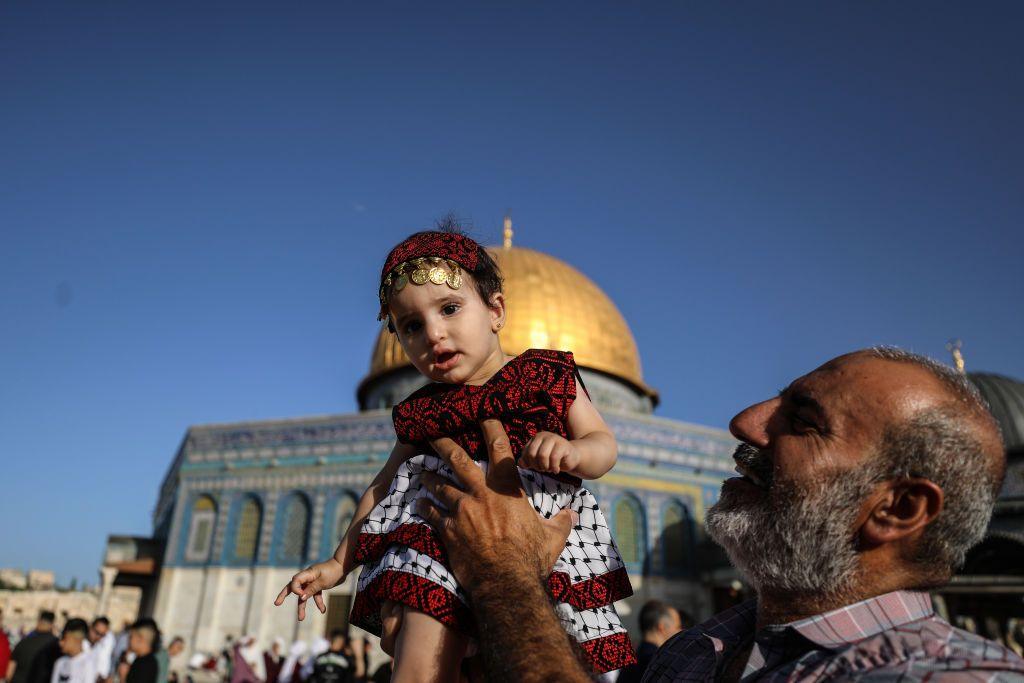
A little girl dressed in traditional Palestinian attire outside the Dome of the Rock, Jerusalem
- Published
Millions of people worldwide are celebrating Eid al-Adha, or the 'Festival of the Sacrifice'.
The three-day celebration is marked with special prayers, feasts and the ritual slaughter of an animal - with the meat then evenly distributed to family, friends, neighbours and the poor and needy.
It's the second and larger of the two annual Eid's - and also coincides with the end of the Hajj pilgrimage to the holy city of Mecca.
Eid al-Adha is one of the most important Islamic holidays and commemorates the willingness of Prophet Ibrahim (Abraham) to sacrifice his son Ishmael as an act of obedience to God's command.

Moscow, Russia: People who could not find empty places in Russia's capital gather to offer Eid prayer on the streets
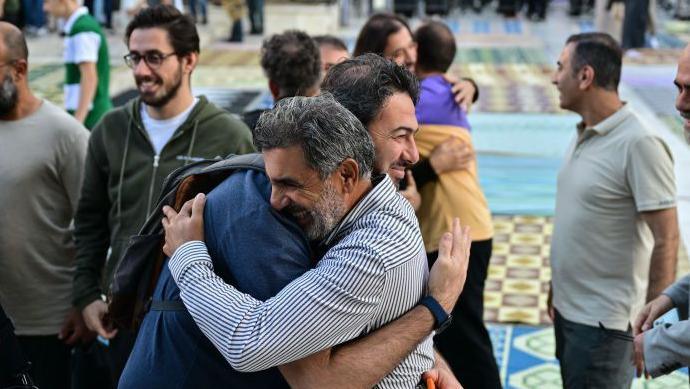
Istanbul, Turkey: Muslims embrace after the morning prayer
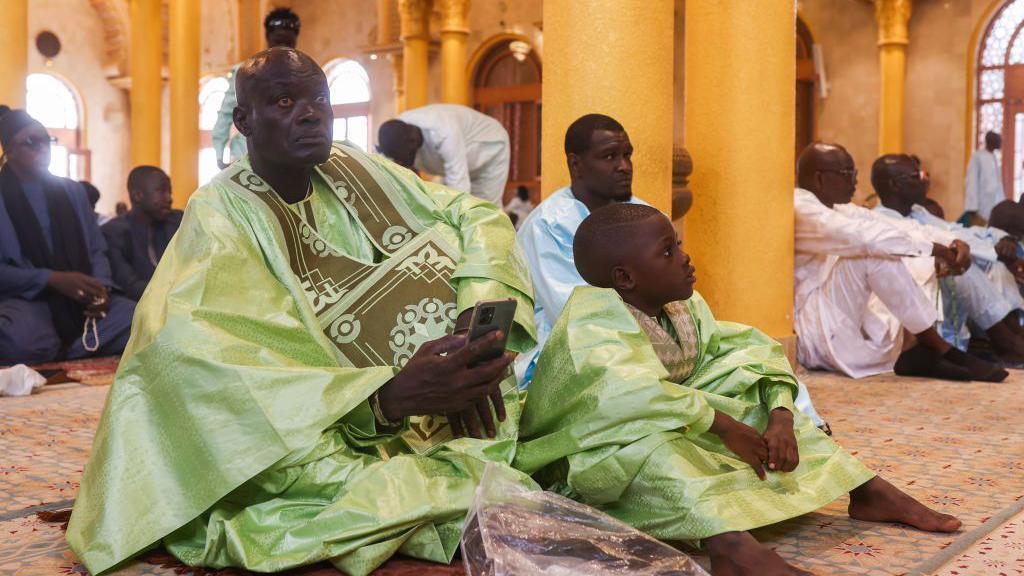
Worshippers arrive at a mosque in Dakar, Senegal, ahead of morning Eid prayers
How is Eid al-Adha celebrated?
Eid al-Adha falls on the 10th day of Dhu-al-Hijjah - which is the twelfth and final month of the lunar Islamic calendar. The exact date depends on the sighting of the moon.
On the morning of Eid, Muslims gather to perform Eid prayers in congregation.
People traditionally wear new clothes and visit family and friends.
They greet one another with "Eid Mubarak" or "Happy/blessed Eid" and often embrace and exchange gifts.
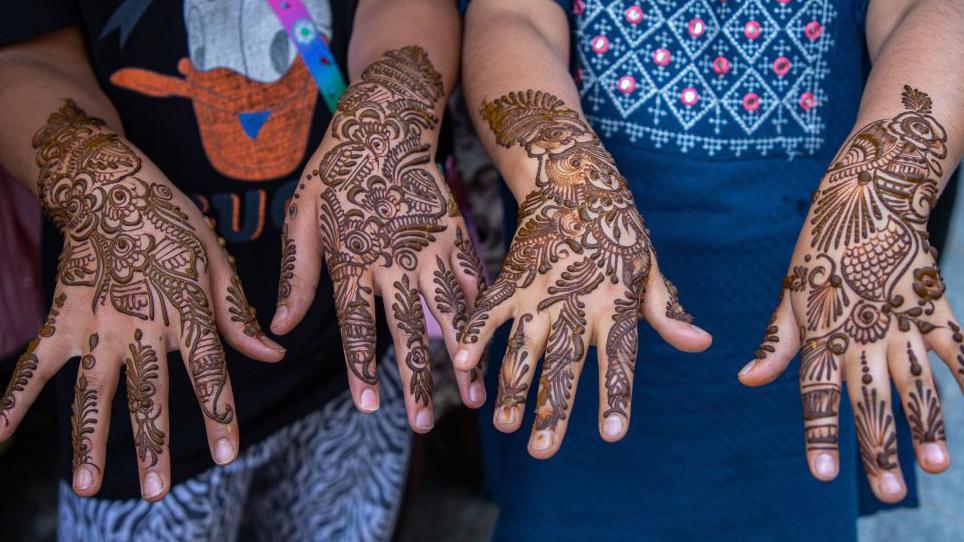
Kashmiri girls show off their hands decorated with henna ahead of Eid-al-Adha celebrations in Srinagar, India
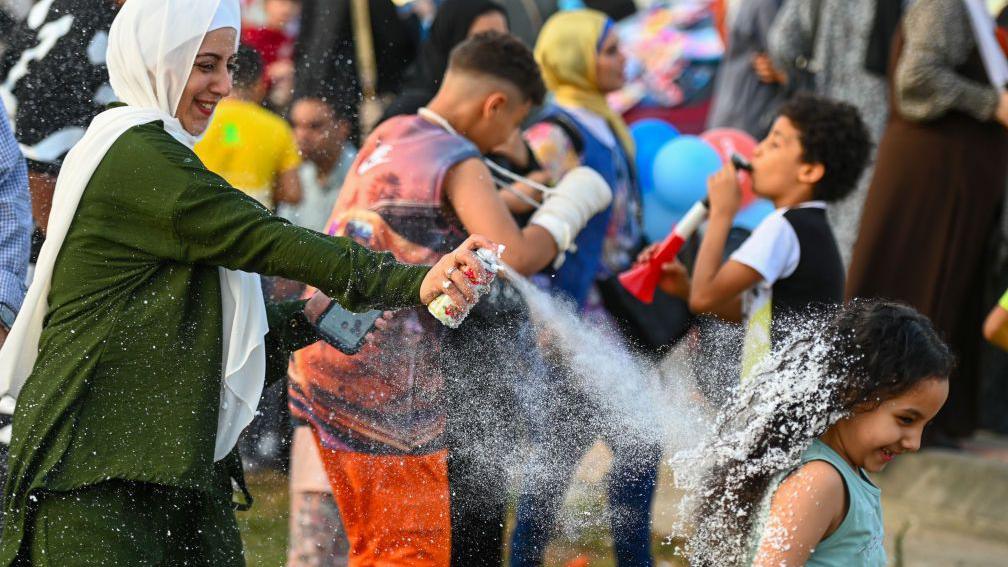
Cairo, Eygpt
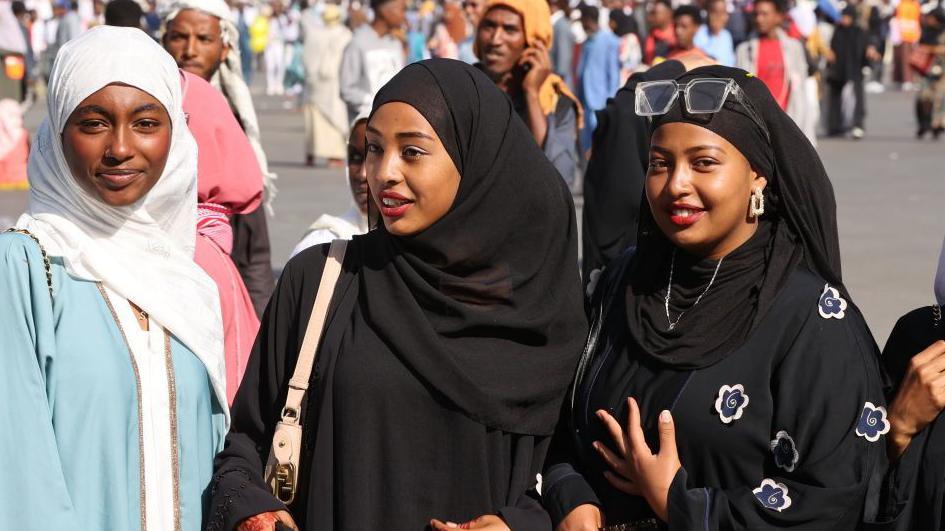
Addis Ababa, Ethiopia
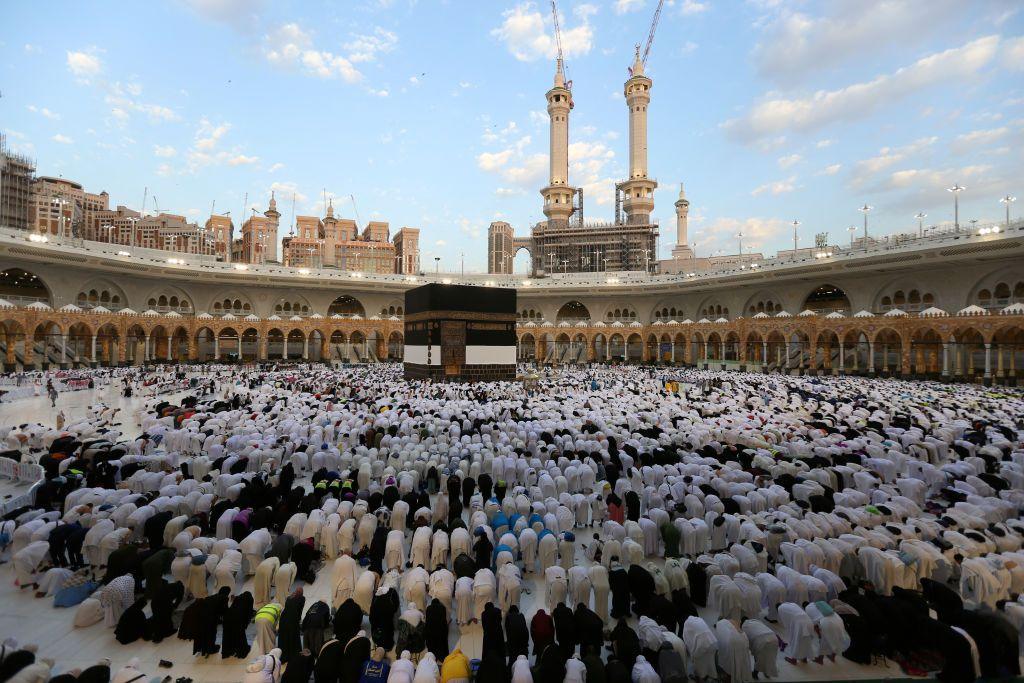
Mecca, Saudi Arabia: Muslims perform the Eid al-Adha morning prayer around the Kaaba, Islam's holiest shrine
What is Hajj and why is it significant?
Every year, millions of Muslims from across the world make the journey to Mecca from wherever they live to perform the Hajj pilgrimage.
It is one of the five pillars of Islam - or five core beliefs of practices.
Muslims are required to make the journey to Mecca for Hajj at least once in their life if they are physically able and can afford to do so.
Mecca is considered the holiest site in Islam and is where the Islamic religion started. It is where the Prophet Muhammad was born and received the first revelations from God.
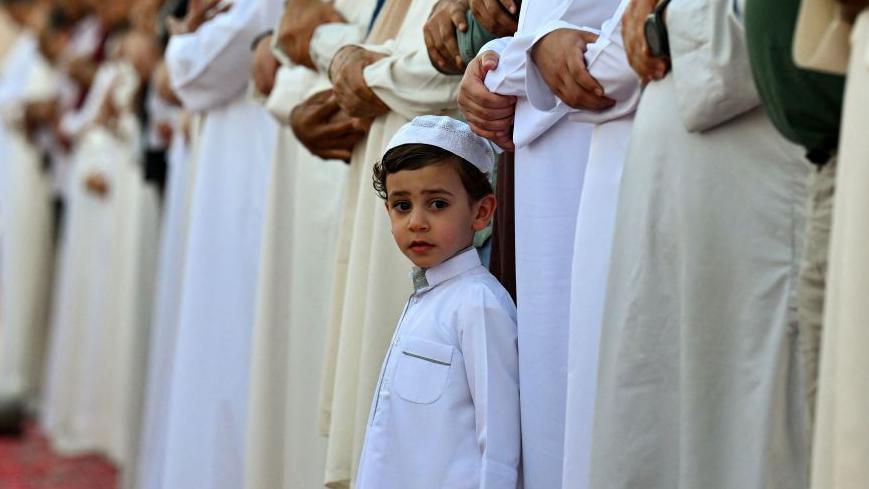
Kuwait City
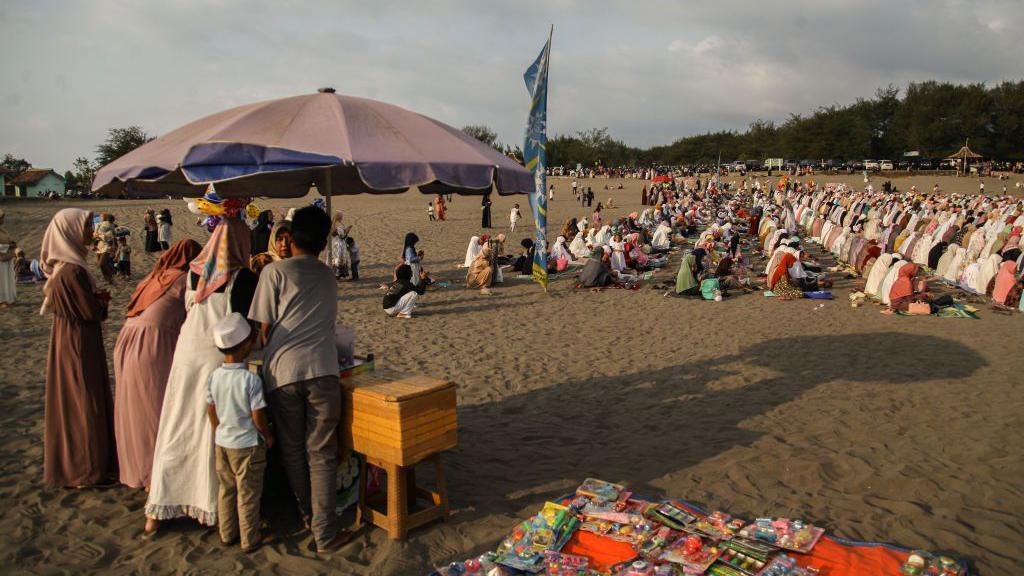
Muslims pray on a sand dune on a beach in Yogyakarta, Indonesia
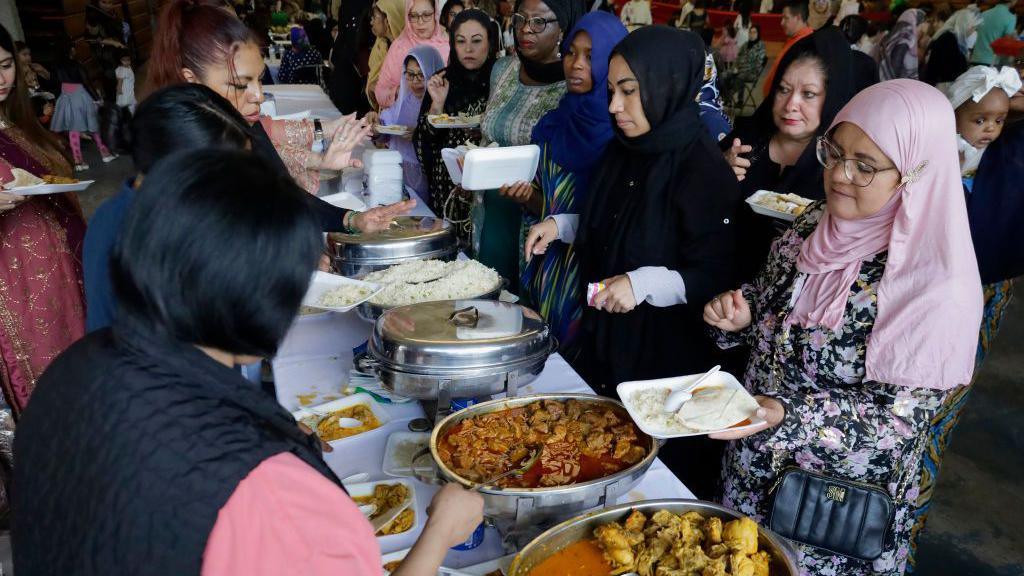
People celebrating together in Mexico City, Mexico
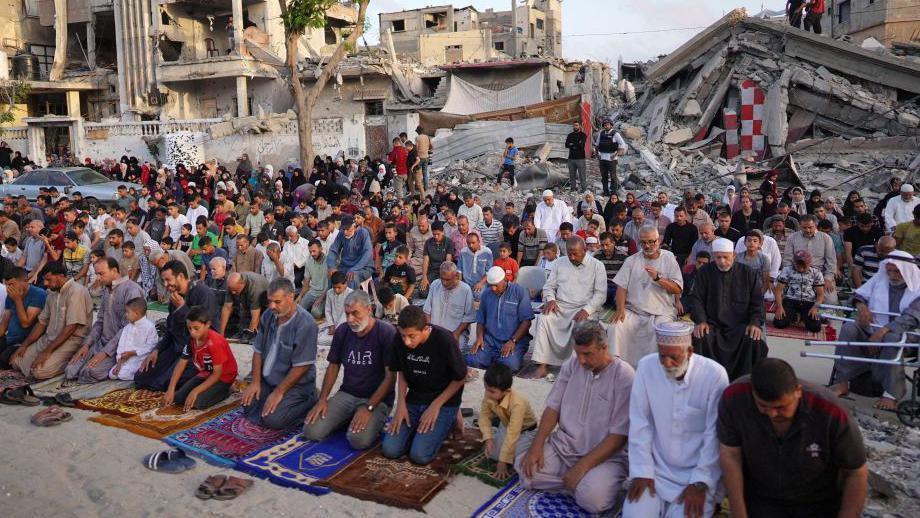
Khan Yunis, Gaza
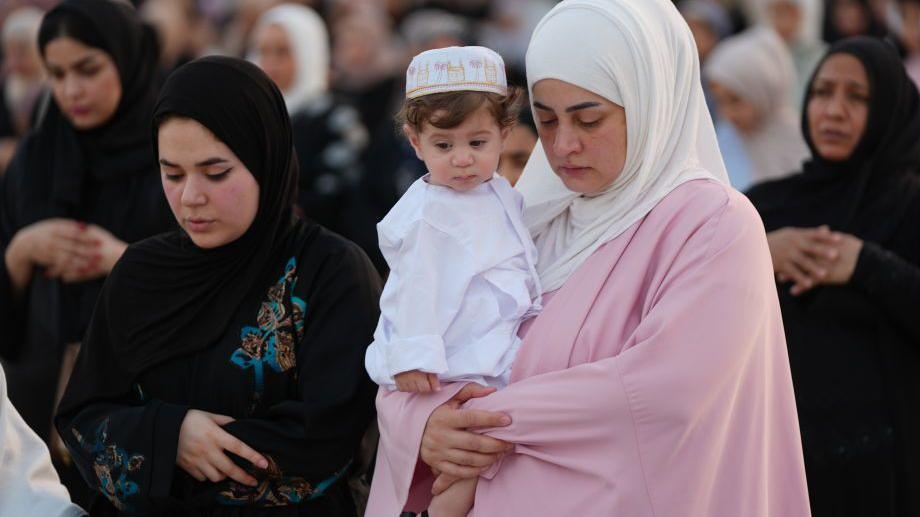
Abdul-Qadir Gilani Mosque in Baghdad, Iraq

Eid al-Adha prayers in the village of Abu Sir, Giza, Egypt
What is Eid al-Fitr and how do Muslims celebrate it?
- Published10 April 2024
Everything you need to know about Eid-al-Fitr
- Published10 April 2024
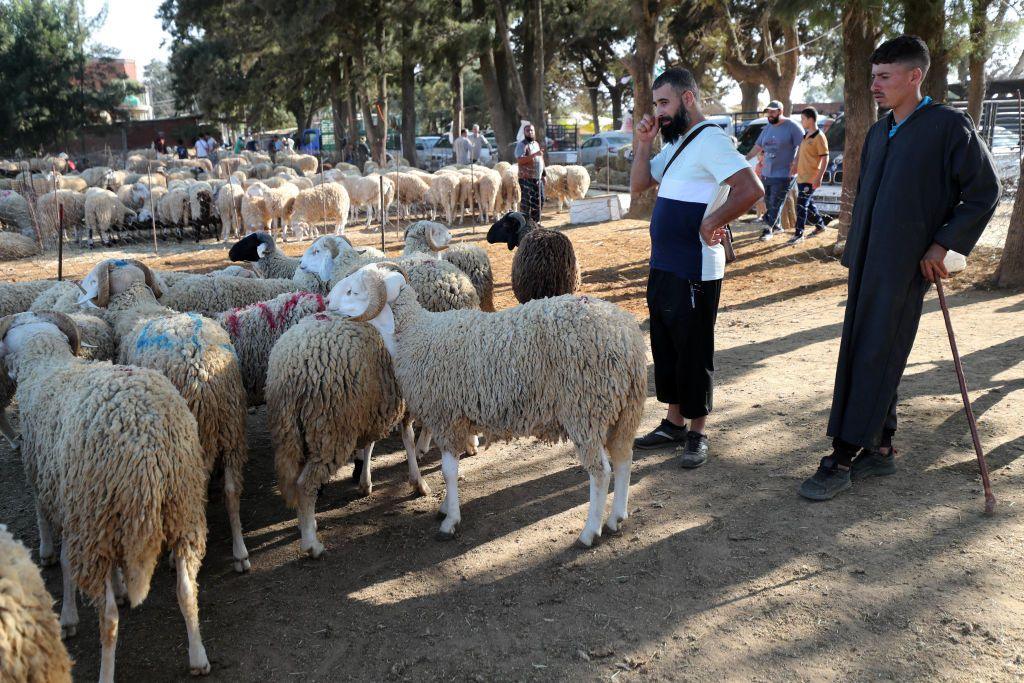
A livestock market ahead of Eid al-Adha in Algiers, Algeria
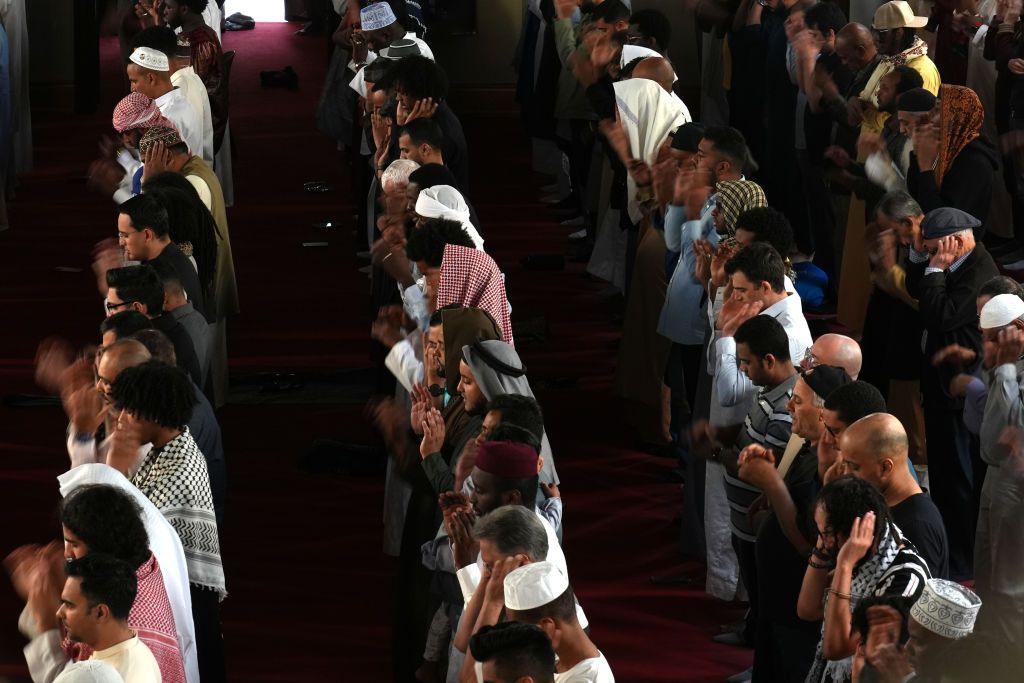
Toronto, Canada